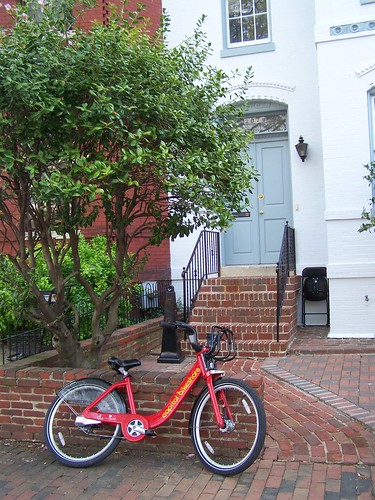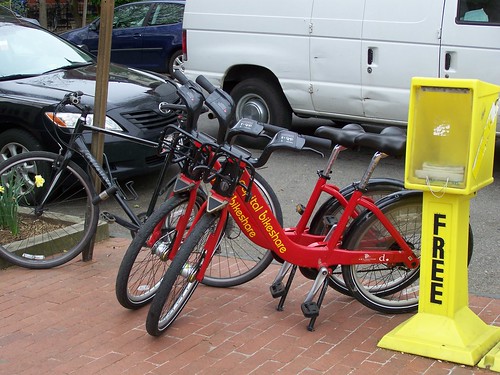Another bike sharing lesson from DC
The start up business in which I am one of the business partners is focused on what I call "bicycle facilities systems integration."
We aren't focused on building bike lanes and such, but on the systems and facilities that support biking, not unlike how the National Bicycle Plan of Germany conceptualizes the support of bicycling as an everyday form of transportation. (Note that frequent commenter "w" sent me a link to this plan about 18 months ago...

Since one of those lines of business that we are working to sell is bike sharing, that means that theoretically, we compete with the company (Public Bicycle Sharing System) which created the Bixi system that is used in DC, so I don't like to write much about what they are doing, partly because it can be said that as a theoretical competitor I am not objective, but also because my learnings (as well as those of my colleagues) in observation get captured in future proposals and our business model and I don't want to tip off the competition. (OTOH they are way better capitalized and have first mover advantage, which makes it difficult to compete with them anyway.)
But, one of the things that is interesting about the deployment of the bike sharing system in DC is because there isn't the kind of station density present in places like Montreal, London, Paris, Barcelona, Lyon, etc., it may be that users of the system are more likely to leave bicycles unlocked, which such as in the case of Paris, leads to high rates of vandalism and theft.
The whole point about not providing locks and having stations located in a dense pattern is to limit the possibility of theft. Rather than give people the opportunity to lock their bikes in a manner which makes them easy to steal, instead they are supposed to put the bike back in a station, in one of the docks, so you only have the bikes unlocked outside of the station terminals when you are riding.
Bike sharing stations are relatively "impregnable" and theft is minimal. E.g., with the new system in London, fewer than 10 bikes out of the initial deployment of 5,000 have been stolen.
Now this first photo shows a CaBi bike completely unattended, and it may have been stolen. I don't know. I went back a few hours later and the bike was gone, but who knows if it was gone legally or illegally.

The second photo is in the commercial district on the 200 and 300 blocks of Pennsylvania Avenue SE. The bikes were under the eye of their users and so the likelihood of theft was minimal, but it definitely made a point: why aren't there bicycle sharing stations in these two key blocks of Capitol Hill? I know that if these blocks were in an equivalent district in Montreal, there'd probably be stations at 2nd and Pennsylvania, 3rd and Pennsylvania, and maybe even 4th and Pennsylvania.

Labels: bicycle parking, bikesharing, urban design/placemaking



0 Comments:
Post a Comment
<< Home